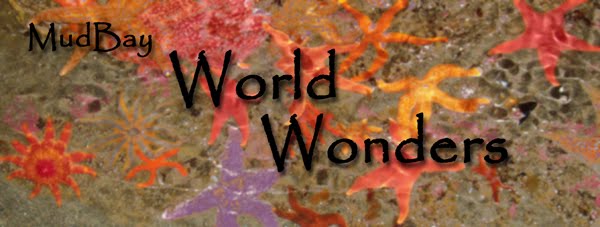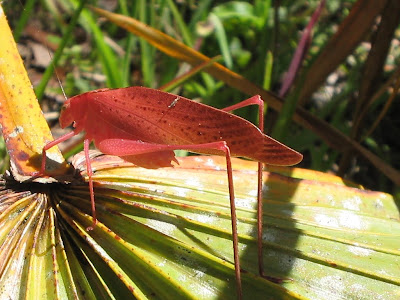From Professor Dan Johnson, former President of the Entomological Society of Canada :
"Many species of Orthoptera have rare colour forms that are typically rose or pink in colour. It is often found in the Acrididae and Tettigoniidae. The rose form of some grasshoppers appears to be genetic. The rose colour is not restricted to one species of family of grasshoppers and katydids, but is is always rare. In some cases, the proportion of rose-coloured members of a local population may increase to as much as 10%, but typically they are rare, on the order of 1 per 1000 to 1 per 10,000, or even rarer.
The Buggy Facts:
The family Tettigoniidae, known in American English as katydids and in British English as bush-crickets, contains more than 6,400 species. It is part of the suborder Ensifera and the only family in the superfamily Tettigonioidea. They are also known as long-horned grasshoppers, although they are more closely related to crickets than to grasshoppers.
Many tettigoniids exhibit mimicry and camouflage, commonly with shapes and colors similar to leaves.
Tettigoniids may be distinguished from grasshoppers by the length of their filamentous antennae, which may exceed their own body length, while grasshoppers' antennae are always relatively short and thickened.
The males of tettigoniids have sound-producing organs (via stridulation) located on the hind angles of their front wings. In some species females are also capable of stridulation.
There are about 255 species in North America, but the majority of species live in the tropical regions of the world.












What a cool bug! It's beautiful!
ReplyDeleteThose colours are just amazing.
ReplyDeleteOMG!!! I want these in our garden!!! They are sooooo beautiful!!! G-d never ceases to amaze...
ReplyDeleteWhat a fabulous blog, Catherine. I am so excited to see what other "wonders" you will be posting.